Check Authenticity of Rogan Art Products
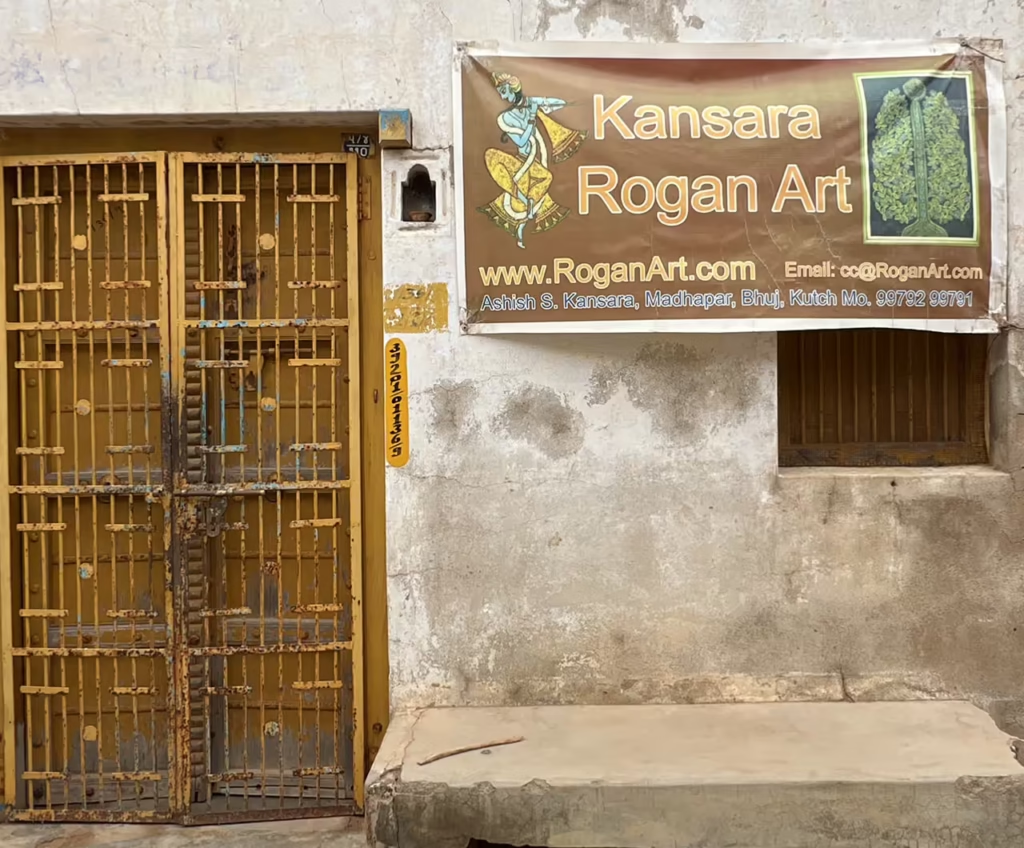
View GI Tag Details and Authorized User Details
The Geographical Indication (GI) tag protects the authenticity of the Kutch Rogan Craft (GI-718). Authentic Rogan art originates specifically from the Madhapar Kutch region of Gujarat, India. When purchasing, verify the product’s geographical origin. Look for documentation or seller verification. This confirms the artwork adheres to the traditional, time-honored method practiced in that region. authentic Rogan art buyers guide.
The Role of Master Artisan Ashish Kansara
For buyers seeking the highest level of official verification, it is crucial to know this. Ashish Kansara is the only authorized user of Kutch Rogan craft. His status confirms his adherence to the standards necessary to preserve the authentic craft. Ashish Kansara is linked with the Rogan Art Kutch Trust in Madhapar. He is recognized for selling original and premium quality products directly to customers. His contributions to the art form have gained notable recognition. His work was selected for the Ram Darbar Rogan painting. It was gifted to the Prime Minister in 2022.
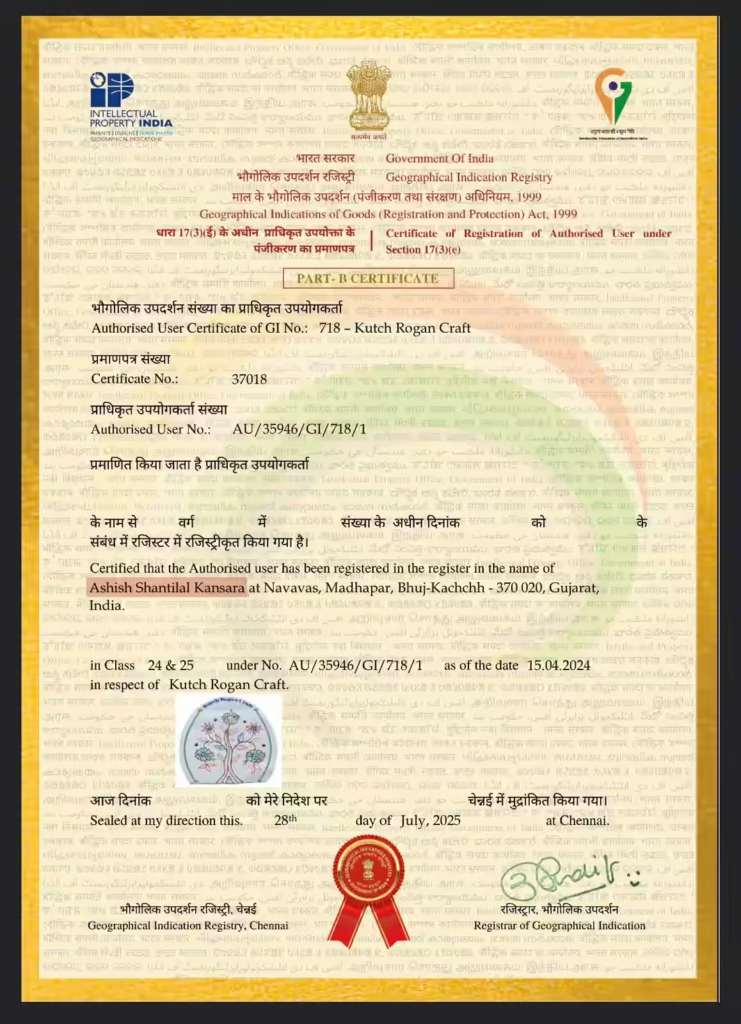
Find the Artisan or Community
True Rogan art is created by families (like the Kansara Family) who have been the practitioners for generations. This craft is a closely guarded family tradition. Techniques and unique motifs are passed down through generations. When selecting a piece, inquire about the artisan’s background. Authentic work will be traceable to an artist from one of these traditional lineages. This traceability guarantees the traditional ways and knowledge were used in its creation.
Material Analysis: The Castor Oil Base and Natural Pigments
The defining material of Rogan art is its thick, oil-based paint. It is made from castor oil. You can also use linseed oil, walnut oil, or poppy seed oil. This oil is often boiled for 8–12 hours to reach the correct consistency. This base is mixed with natural pigments derived from minerals and chalk powder to create its vibrant colors. When examining a product, you should inquire about the paint composition. Authentic pieces use this traditional castor oil paste and natural colorants. They contribute to the unique texture and appearance. These pieces do not use modern synthetic alternatives.
Recognize the Unique Application Technique
A genuine Rogan artwork is applied entirely freehand. An artist uses a small metal rod or stylus (tulika) for this purpose. No stencils or preliminary sketches are used. A key characteristic to look for is symmetrical design. This is achieved by painting one half of the design. Then, the fabric is folded to create a perfect mirror image. Furthermore, the paint itself should have a thick, raised texture. It creates a distinct, slightly embossed effect on the fabric. This is a hallmark of the traditional technique. It gives the fabric a tactile, sculptural quality.
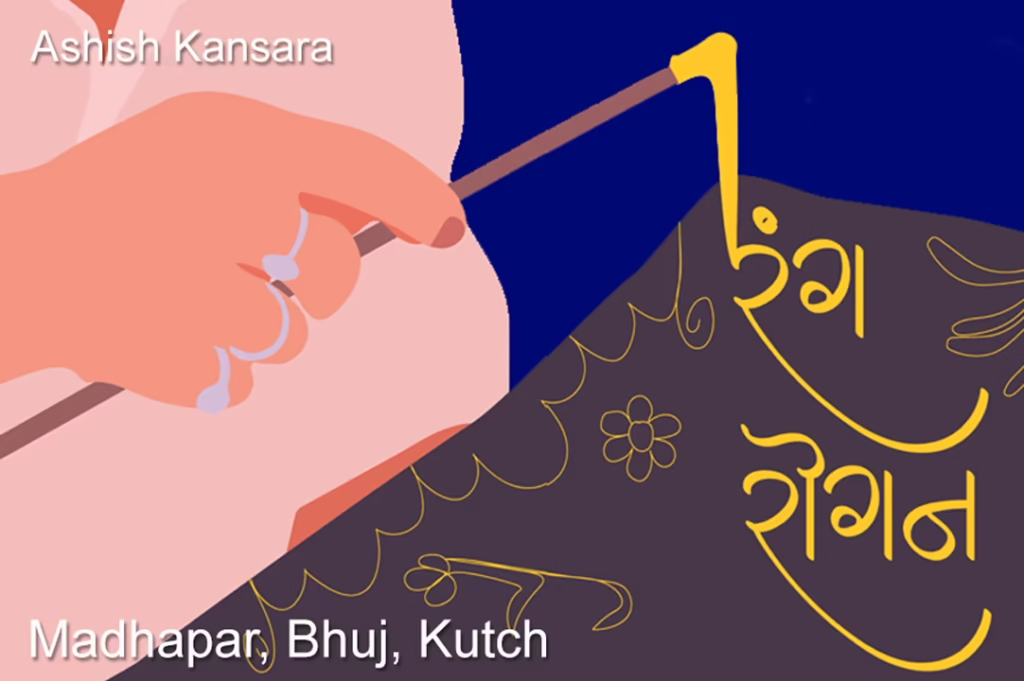
Distinguishing Styles: Rogan Chhap, Nirmika, and Varnika
Rogan art has three traditional styles. Each style reflects a different technique and labor commitment. This is crucial for assessing its authenticity and value.
- Rogan Chhap (Traditional): This is the classic, entirely freehand method. The design is painted with the stylus (tulika) on one side of the fabric. Then it is folded to create a symmetrical mirror image. This technique demands the highest level of skill and time.
- Nirmika Rogan Chhap (Semi-mechanical): This style uses brass molds filled with Rogan paste. These molds are pressed or stamped onto the fabric. This process creates precise, repetitive patterns. While still utilizing the core material, it requires less freehand labor than Rogan Chhap.
- Varnika Rogan Chhap (Embellished): This technique typically involves a single-color freehand base. Brushes are then used to add extra colors or embellishments. Materials like mica (abrakh) or glitter (zari) are incorporated for a shimmering effect.
Look for Buyers Review and Testimony
Where to Find Credible Reviews
Rogan art has gained significant international recognition and is featured in exhibitions, fashion shows, and global marketplaces. To assess a seller’s reputation, you can look for testimonials and feedback from these platforms or specialized handicraft stores (like Roganart.com, craftcentres.com, nirona.in, kutchhandicrafts.com, or Kaushaly.com). Check if the artisan or vendor has participated in recognized cultural exhibitions. They have collaborated with known fashion designers. This is often a sign of credibility and quality. These events sometimes offer a platform for collector and buyer reviews.
Analyzing Reviews for Red Flags and Green Flags
When reading reviews or product descriptions, look for confirmation that the piece is entirely hand-painted (freehand). This is done using the specific oil-based technique. Be wary of items that look too perfect or uniform. Authentic Rogan art should show the slight variations of freehand work. Positive reviews will often mention the “intricate designs.” They also describe “vibrant patterns” and the “raised texture” of the paint. These are all indicators of a genuine, quality piece.
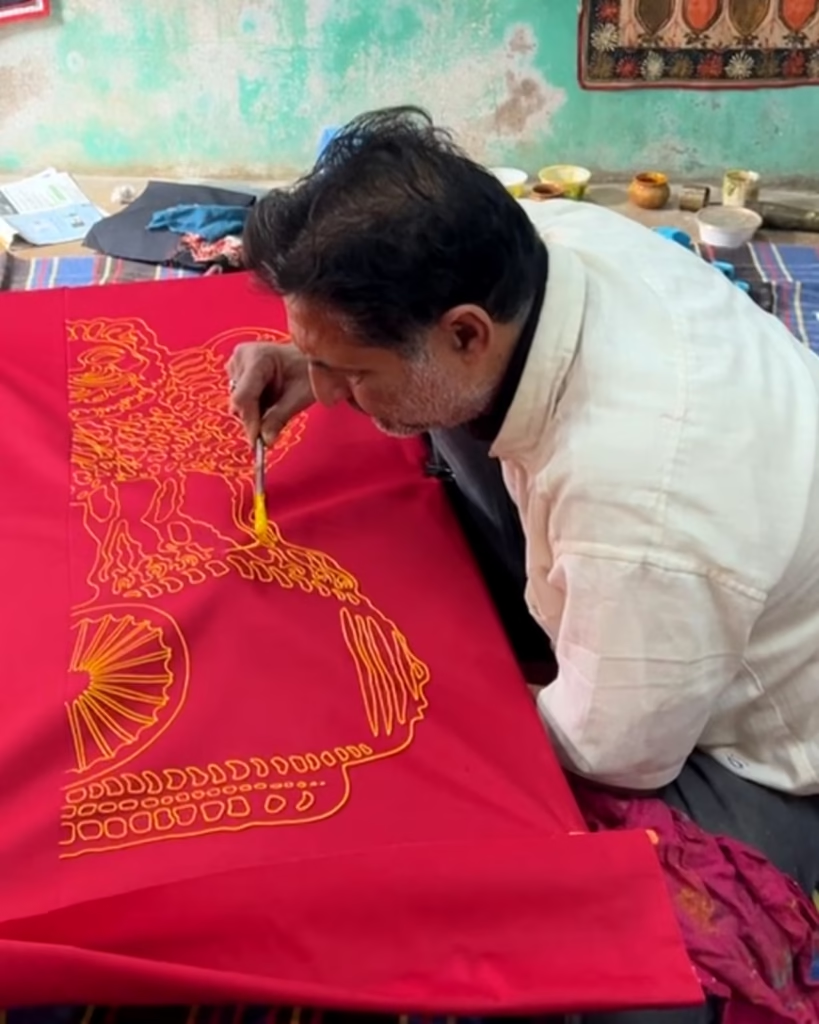
Compare Quality and Artistic Work
Assessing the Finesse of the Craftsmanship
The quality of a Rogan art product is clear in the intricacy and precision of its designs. The artist creates the patterns freehand without any preliminary sketches. This technique directly showcases their skill through symmetry and clean lines. Examine the piece closely. High-quality work will feature complex and elaborate motifs. These are executed with steady hands and immense patience. This reflects generations of refined technique.
Evaluating Color Saturation and Consistency
Authentic Rogan art is known for its vibrant and glossy colors. Look for a piece where the colors are rich and saturated, with a consistent application. The traditional palette often consisted of orange, white, blue, yellow, and green. Modern art, yet, incorporates a wider range of vibrant hues. The paint should have a distinct shine. It should also have a thick consistency that sits prominently on the fabric surface. This contributes to its luminous and textured finish.
Examining the Uniqueness and Complexity of Motifs
Rogan art can be categorized by its specific themes and motifs, which often carry cultural significance. When comparing pieces, look for:
- Floral Motifs: Stylized flowers, vines, and leaves, often arranged with perfect symmetry.
- Animal Motifs: Depictions of symbolic animals like peacocks.
- Geometric Patterns: Complex interwoven shapes and borders, often including architectural elements like Jalis/screens.
- Mythological Themes: Designs inspired by local folklore and Hindu deities. The “Tree of Life” motif is famous and symbolizes growth and prosperity. It is a particularly notable and sought-after example of complex Rogan work.
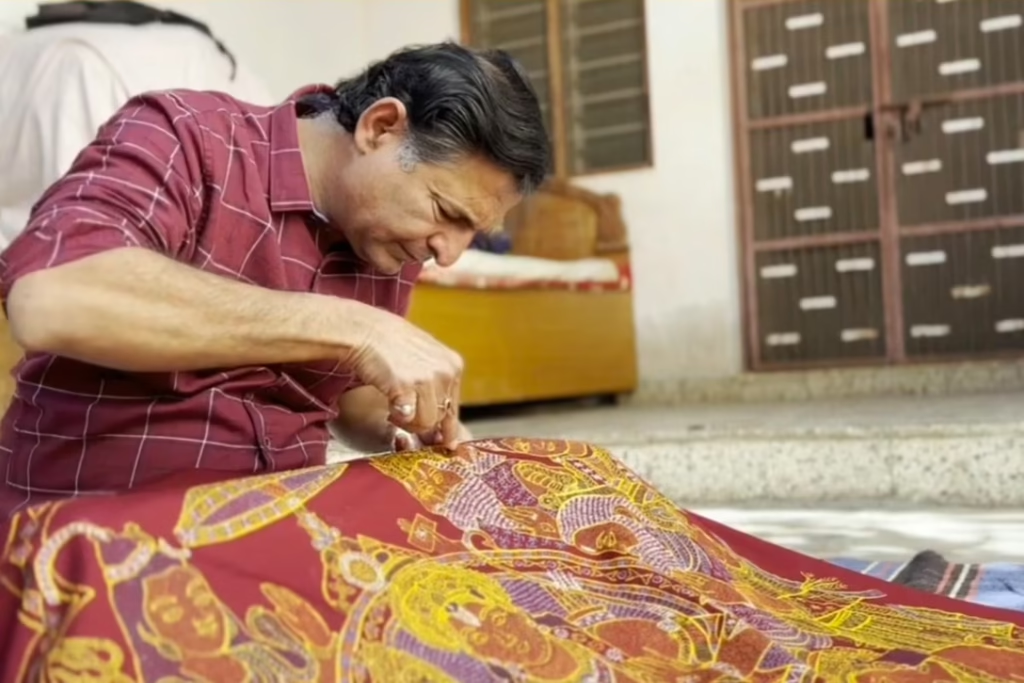
Consider the Practicalities: Buy and Care
Understanding Pricing: Why Authentic Rogan Art Costs More
The high cost of genuine Rogan art is a direct reflection of the immense labor and skill involved. The process is incredibly time-consuming; preparing the castor oil paste alone is a lengthy process (e.g., boiling the castor oil for over 12 hours) , and the painting itself requires exceptional precision and can take from several days for a small piece to many weeks for a large, complex work. The price justifies the artisan’s skill, the manual effort, and the use of traditional materials. Each piece becomes a valuable, handcrafted artifact. Prices vary widely based on size and complexity.
How to Care for Your Rogan Art Piece
After the oil-based paint dries and cures, which often happens through sun-drying, it hardens. It adheres durably to the fabric. This process makes the artwork relatively sturdy. To guarantee its longevity, you should care for it properly. Gently dust the surface with a soft, dry cloth. Avoid direct sunlight to prevent the vibrant colors from fading over time, a precaution often recommended for oil-based arts. For detailed cleaning instructions, contact the artisan or trust directly. Specific washing and cleaning advice for Rogan art is not publicly standardized. Proper care will extend the artwork’s textural quality. It will also preserve its color vibrancy for years. This allows the piece to stay a treasured item.
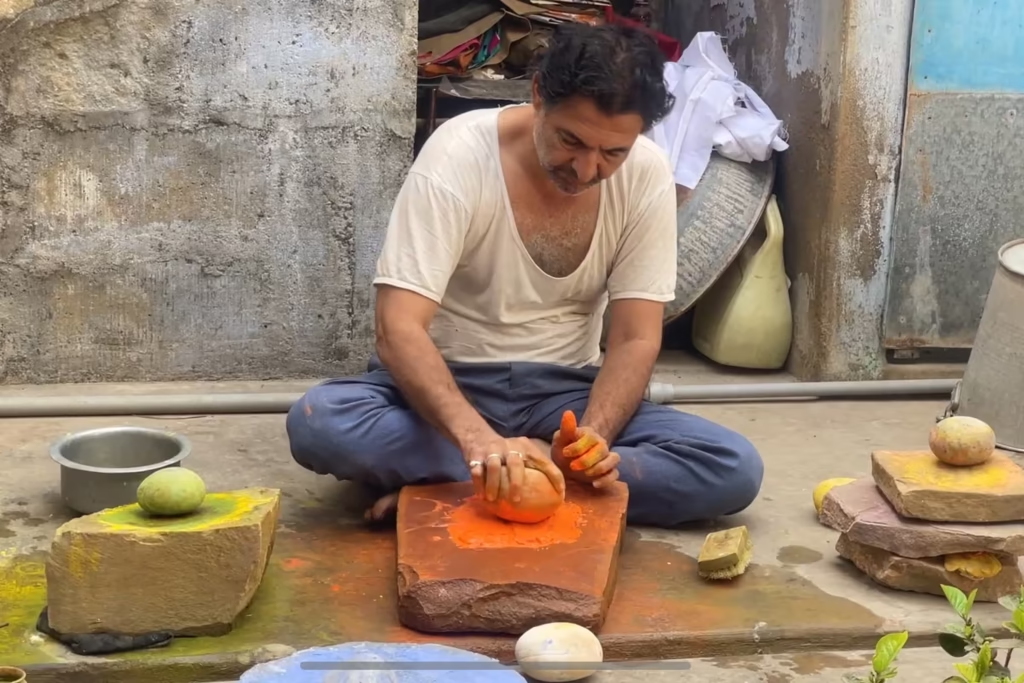
Conclusion: Your Journey to Owning a Masterpiece
Summarize Key Checks Before Buy
Acquiring authentic Rogan Art is a deliberate process requiring a synthesized validation approach. The discerning collector must confirm legal authenticity, which includes the GI Tag and Authorized User Ashish Kansara. They must also verify technical authenticity, for example, a castor oil base, raised texture, and mirror symmetry. Finally, lineage authenticity, traceable to the traditional Kshatriya artisan community, should be confirmed before making a final investment.
Support Authentic Rogan Artists for Cultural Preservation
Your informed buy directly impacts a living cultural legacy that spans over 1,550 years. Rogan Art is critically classified as a dying craft, with only a handful of skilled families continuing the practice. By consciously choosing authenticated, high-quality, freehand pieces, you directly support the livelihood of these traditional artisans. Paying a fair price also funds the continuation of this specialized ancestral knowledge. It helps preserve India’s rich cultural heritage.
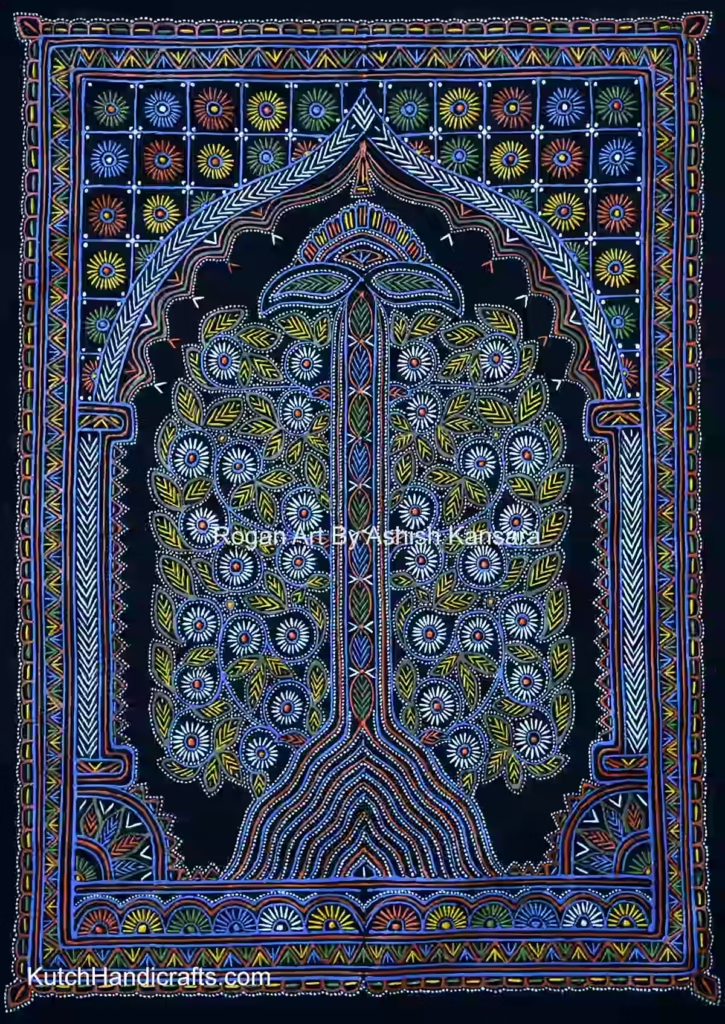
Prefer Buying from Certified Handicraft Platforms
To make sure ethical sourcing and fair compensation for the artisans, choose purchasing directly from the authorized artist, affiliated trusts, or certified handicraft platforms and stores known for quality assurance (like Roganart.com, craftcentres.com, nirona.in, kutchhandicrafts.com, or kaushaly.com) This approach helps sustain the craft’s economic viability and promotes the global appreciation of this rare textile tradition.